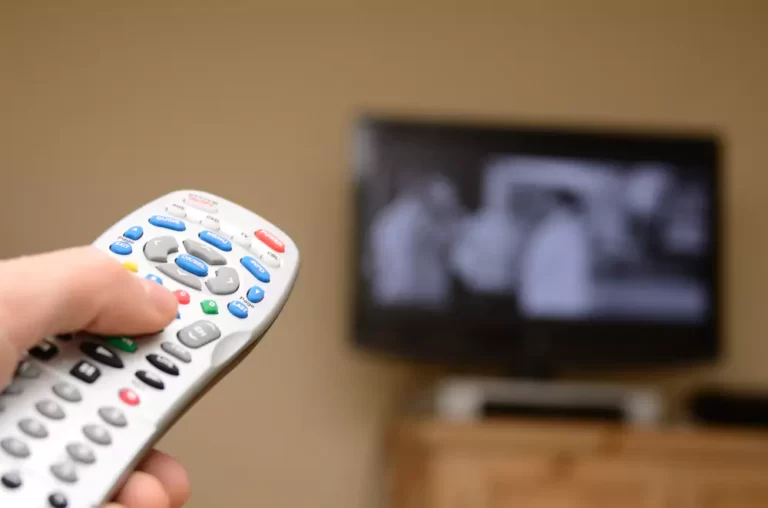How To Easily Handle Every Electricity Bill Challenge Every Month Using These Tips?

Are you tired of feeling overwhelmed by your monthly electricity bill? Do you find yourself struggling to keep up with payments and constantly worrying about the impact of your energy usage on the environment?
The good news is that there are simple and effective ways to take control of your electricity bill and reduce your energy consumption without sacrificing comfort or convenience.
In this article, we will guide you through the process of understanding your electricity bill, assessing your current energy usage, identifying energy-saving opportunities, and making adjustments that can save you money and reduce your environmental footprint.
By following these tips, you’ll be able to easily handle every electricity bill challenge every month and enjoy a more sustainable and affordable lifestyle.
So let’s get started!
Assessing Your Current Energy Usage
Assessing your energy usage is a crucial step in managing your monthly electricity expenses. By evaluating your current energy consumption, you can identify areas where you can make adjustments and save on your electricity bills.
Start by looking at the appliances and devices that consume the most energy in your home. You can use your smart meter to monitor your energy usage and determine which appliances are using the most energy and when they are being used the most. This information can help you adjust your energy usage accordingly and reduce your electricity bills.
Calculating savings is another way to assess your energy usage. You can calculate your energy savings by comparing your current energy consumption to your previous usage. This will help you determine if you are making progress in reducing your energy consumption and saving on your electricity bills.
With smart metering, you can also track your energy usage in real-time and make adjustments as needed to reduce your energy consumption and save money on your electricity bills. By assessing your current energy usage, you can make informed decisions and take steps to reduce your electricity bills.
Identifying Energy-Saving Opportunities
Identifying energy-saving opportunities is a crucial step towards achieving long-term cost savings and reducing your environmental impact. One of the easiest ways to save on your electricity bill is by opting for renewable options, such as solar panels. While the initial investment may seem expensive, solar panels can save you a significant amount of money in the long run.
Additionally, you can even sell excess energy back to the grid, further reducing your bill. Another way to identify energy-saving opportunities is by investing in smart technology. Smart thermostats, for example, can learn your habits and adjust the temperature accordingly, leading to reduced energy consumption.
Smart power strips can also help by automatically turning off appliances that are not in use. By utilizing these energy-saving options, you can not only save money on your electricity bill but also contribute to a more sustainable future.
Adjusting Your Thermostat for Optimal Efficiency
You can save money and reduce energy consumption by adjusting your thermostat for optimal efficiency, so let’s explore some simple ways to do it.
The optimal temperature for your home is between 68-72 degrees Fahrenheit during the winter months, and between 75-78 degrees Fahrenheit during the summer months. By keeping your thermostat within this temperature range, you can ensure that your home stays comfortable while also minimizing your energy consumption.
Seasonal adjustments are also important to consider when adjusting your thermostat. During the winter months, you can reduce your energy consumption by lowering your thermostat by 7-10 degrees Fahrenheit when you’re away from home or asleep.
During the summer months, you can increase your energy efficiency by raising your thermostat by 7-10 degrees Fahrenheit during the same times. A programmable thermostat can make these adjustments easier by allowing you to set a schedule for your thermostat to follow, ensuring that your home stays comfortable while also maximizing energy efficiency.
Switching to Energy-Efficient Light Bulbs
Switch to energy-efficient light bulbs to reduce your energy consumption and save money on your electricity bill, while still keeping your home well-lit and comfortable. Traditional incandescent bulbs consume a lot of energy and generate a lot of heat, making them one of the least efficient lighting options. On the other hand, LED bulbs are much more energy-efficient and have a longer lifespan, which means they will save you money in the long run. Here are some benefits of LED bulbs and tips on how to choose the right energy-efficient light bulb for your home:
| Benefit | Explanation |
|---|---|
| Energy Efficiency | LED bulbs use significantly less energy than traditional incandescent bulbs, which means you can save money on your electricity bill. |
| Long Lifespan | LED bulbs can last up to 25 times longer than traditional incandescent bulbs, which means you won’t have to replace them as often. |
| Durability | LED bulbs are more durable than traditional incandescent bulbs, which means they are less likely to break or shatter. |
| Environmentally Friendly | LED bulbs are better for the environment because they use less energy and contain no harmful chemicals. |
| Versatility | LED bulbs come in a variety of shapes, sizes, and colors, making them suitable for any space in your home. |
When choosing an energy-efficient light bulb, consider the color temperature, brightness, and wattage. Color temperature refers to the color of the light emitted by the bulb, which can range from warm white to cool white. Brightness is measured in lumens and indicates how much light the bulb produces. Wattage refers to the amount of energy the bulb consumes, with lower wattage bulbs being more energy-efficient. By selecting the right bulb for your needs, you can save money on your electricity bill without sacrificing the quality of your lighting.
Unplugging Electronics When Not in Use
Don’t let your electronics drain unnecessary energy and waste your hard-earned money. Start unplugging them when not in use! Power saving strategies like reducing standby power can significantly reduce your electricity bill. Standby power refers to the energy that your appliances and electronics consume even when they’re not in use. By unplugging them from the wall socket, you can prevent them from consuming standby power, saving you money in the process.
To make it easier for you to implement this power saving strategy, here are some tips to keep in mind:
Make it a habit to unplug your electronics whenever they’re not in use.
Use a power strip to make it easier to turn off multiple devices at once.
Consider buying smart plugs that can be controlled through your phone. This allows you to turn off devices even when you’re not at home.
By following these tips, you can easily reduce your electricity bill and have more money to spend on other things. Remember, every little bit counts when it comes to saving energy and money!
Using High-Energy Appliances Strategically
Now that you’ve learned about unplugging electronics when not in use, it’s time to talk about using high-energy appliances strategically. This is an important aspect of managing your electricity bill, as appliances that use a lot of energy can quickly drive up your costs. By implementing energy-saving habits and smart appliance management, you can keep your bill manageable without sacrificing your comfort.
One of the easiest ways to save on energy costs is to be mindful of how and when you use high-energy appliances. For example, running your dishwasher during peak hours can be more expensive than running it during off-peak hours. Similarly, using your oven or dryer for shorter periods of time can help you save on energy costs. To help you better understand which appliances are using the most energy and how to use them strategically, take a look at the table below.
| Appliance | Average Energy Usage | Tips for Energy-Saving |
|---|---|---|
| Refrigerator | 1000 kWh/year | Keep it full, set temperature between 35-38°F |
| Oven | 2400 watts/hour | Use convection setting, cook multiple dishes at once |
| Dishwasher | 1200 watts/cycle | Run during off-peak hours, only run when full |
| Dryer | 3000 watts/hour | Clean lint filter, use dryer balls to reduce drying time |
By making a few small changes to your appliance habits, you can significantly reduce your energy usage and lower your monthly electricity bill. So, start implementing these tips today and enjoy the savings!
Installing Energy-Saving Devices
Installing energy-saving devices can be a game-changer for reducing your energy usage and saving money on your monthly bills. There are plenty of cost-effective options available in the market that are easy to install and can make a significant difference in your energy consumption.
Here are some devices you can consider:
Smart Thermostats: A smart thermostat can help you regulate your home’s temperature automatically, saving you energy and money. They learn your schedule and preferences and can adjust the temperature accordingly, so you don’t have to worry about manually changing it.
LED Light Bulbs: LED light bulbs use significantly less energy than traditional incandescent bulbs and can last up to 25 times longer. They’re more expensive than traditional bulbs, but the savings over time more than make up for it.
Power Strips: Many devices continue to use energy even when they’re not in use. You can use power strips to turn off multiple devices at once, reducing your energy consumption. The installation process is straightforward, and you can start saving money on your bills immediately.
Exploring Alternative Energy Sources
Let’s delve into the world of alternative energy sources and discover new ways to power our homes while reducing our carbon footprint.
Renewable options such as solar, wind, and hydro power are becoming increasingly popular as people look for ways to reduce their reliance on traditional fossil fuels. While the initial costs of installing alternative energy sources may be higher, the long-term savings on electricity bills can offset these expenses.
When considering alternative energy sources, it’s important to do a cost comparison between different options and traditional electricity providers. Solar power, for example, may require a larger initial investment for the installation of panels and equipment, but it can provide significant savings over time.
Additionally, many states offer incentives and tax breaks for those who choose to invest in renewable energy sources. By exploring alternative energy sources, you can not only save money on your electricity bill but also contribute to a more sustainable future.
Creating a Budget and Sticking to It
You can take control of your finances by creating and sticking to a budget, allowing you to prioritize your spending and reach your financial goals. Here are some tips for prioritizing expenses and tracking spending habits:
Identify your monthly income and expenses. This will give you a clear picture of your financial situation and help you determine where you can cut back.
Set financial goals and create a plan to achieve them. This will help you stay motivated and focused on your long-term financial success.
Use a budgeting tool or app to track your spending and stay on top of your finances. This will make it easier to identify areas where you can save money and adjust your budget as needed.
By following these tips, you can take control of your finances and easily handle every electricity bill challenge every month.
Monitoring Your Progress and Making Adjustments
Now that you’ve established a budget and financial goals, it’s time to monitor your progress and make adjustments along the way to ensure your success. Tracking your progress is a critical step in achieving your financial goals. You need to know if you’re on track or if you need to make some changes to your budget.
One way to track your progress is to use a table like the one below. This table will help you keep track of your monthly income, expenses, and savings. By analyzing your data, you can identify areas where you need to cut back on expenses or increase your savings. This will help you stay on track and achieve your financial goals. Remember, it’s essential to make adjustments as necessary to ensure your success.
| Monthly Income | Monthly Expenses | Monthly Savings |
|---|---|---|
| $3,000 | $2,500 | $500 |
| $4,000 | $3,500 | $500 |
| $5,000 | $4,000 | $1,000 |
Analyzing data is the next step in monitoring your progress. Look for patterns in your spending and saving habits. Are you spending too much money on entertainment? Do you need to cut back on eating out? By analyzing your data, you can identify areas where you need to make changes to your budget. Remember, small changes can make a big difference in the long run. Keep track of your progress and make adjustments as necessary to ensure your success.
Seeking Professional Assistance if Needed
Are you struggling with your finances? Seeking professional assistance can be a game-changer. When it comes to handling electricity bills, consulting with a professional can help you manage your finances better. You may be hesitant to hire an expert because of the cost, but consider the long-term benefits.
Here are some benefits of consulting with a professional for your electricity bills:
- They can help you understand your bills better, including how to read them and how to interpret the charges.
- They can provide you with tips and tricks to reduce your energy consumption and lower your bills.
- They can also help you create a budget and payment plan that works for you, so you can avoid late fees and penalties.
While the cost of hiring a professional may seem high at first, the savings and peace of mind that come with proper financial management can be well worth it in the end.
Don’t let your electricity bills overwhelm you – seek professional assistance if needed.
Conclusion
So, here’s how you can easily handle every electricity bill challenge that comes your way each month:
- Take the time to understand your bill.
- Assess your energy usage.
- Identify energy-saving opportunities in your home.
Adjusting your thermostat for optimal efficiency, switching to energy-efficient light bulbs, and exploring alternative energy sources are just a few of the many ways you can save money on your electricity bill.
By creating a budget and monitoring your progress, you can stay on track and make adjustments as needed. And if you ever need help, don’t hesitate to seek professional assistance.
With these tips, you can take control of your energy usage and save money on your electricity bill each and every month.





